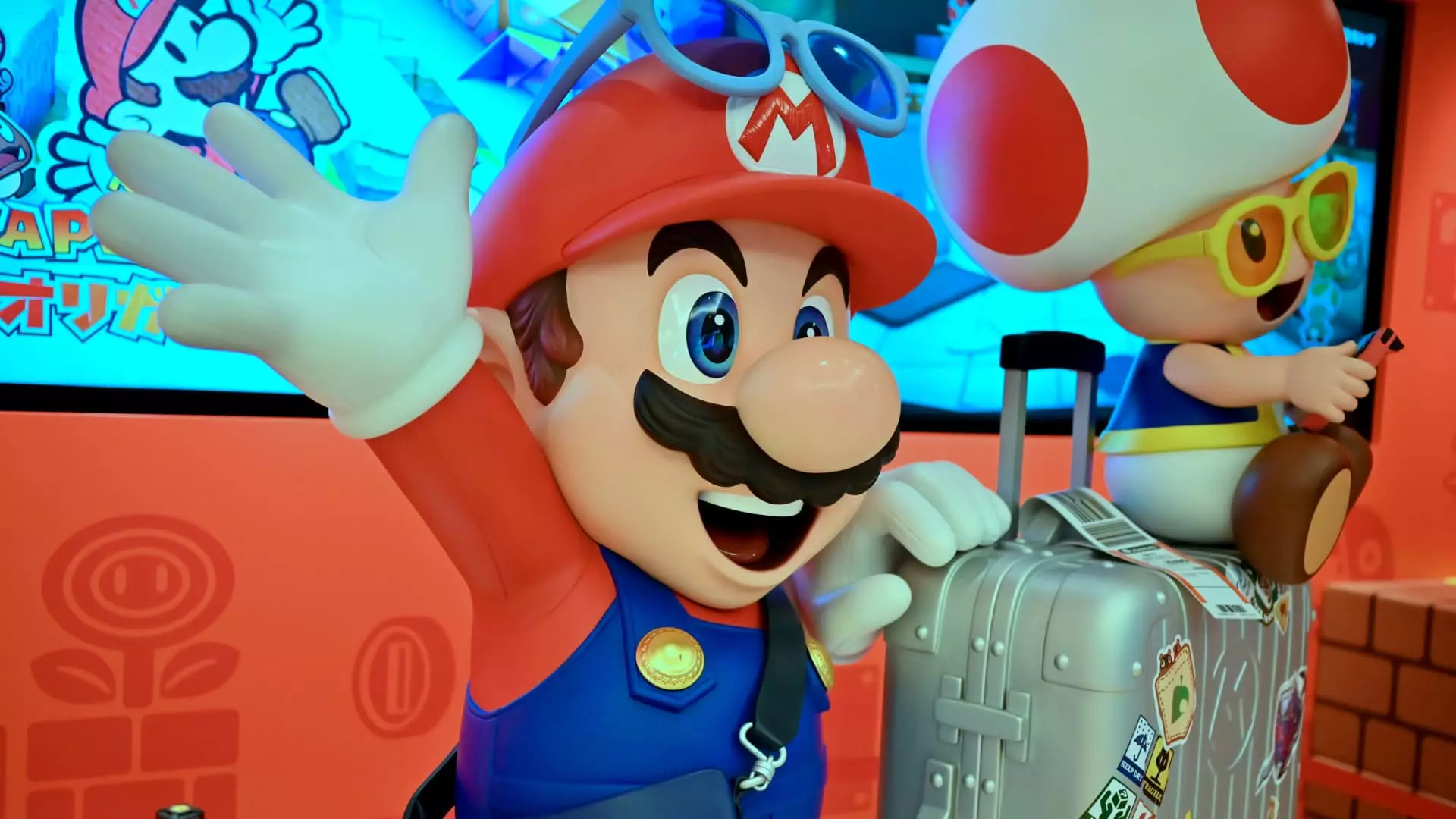Nintendo’s recent financial report for its fiscal third quarter, which ended on December 31, has raised eyebrows among analysts and investors alike. The company announced weaker-than-expected earnings, prompting a downward adjustment of its sales forecasts for the Nintendo Switch. As anticipation builds for the launch of the Switch successor—often referred to as the Switch 2—Nintendo must navigate a challenging landscape, evidencing a potential shift in momentum for one of the most revered gaming consoles in history.
Nintendo’s official earnings report indicated a revenue of 432.92 billion Japanese yen (approximately $2.8 billion), falling short of the anticipated 498.22 billion yen. Similarly, net profit reached 128.53 billion yen, underperforming against the expected figure of 136.16 billion yen. Year-on-year comparisons further highlight an unsettling trend, with net profit dropping by 6%. Such financial underperformance contrasts sharply with Nintendo’s legacy as a powerhouse in the gaming industry, signaling troubling signs as the company shifts its focus toward the next generation of gaming hardware.
This decline in profitability comes alongside a concerning trend of diminished interest in the nearly eight-year-old Switch console. Analysts observe a fading enthusiasm for the platform, despite Nintendo’s previous efforts to refresh the console experience through updated models and cross-media promotions involving beloved franchises like Super Mario and Pokémon.
The Nintendo Switch has enjoyed remarkable commercial success since its launch in 2017, achieving worldwide sales of 150.86 million units and positioning itself as Nintendo’s second-most successful hardware, just behind the Nintendo DS. However, as demand appears to be waning, Nintendo has adjusted its sales forecast for the current fiscal year ending March 31, 2024, expecting to sell only 11 million units instead of the previously estimated 12.5 million. In the most recent quarter, sales numbers dipped significantly, with 4.82 million Switch consoles sold—a staggering 30.6% decline compared to the prior year.
The momentum of the Switch is crucial not only for Nintendo’s bottom line but also for maintaining the enthusiasm of its vast user base, which boasts 129 million active players. These users have been drawn to the consistent pipeline of popular game releases featuring iconic characters such as Link and Mario. However, the impending transition to a new console presents a dual-edged sword for Nintendo, as it must facilitate a smooth migration of its loyalists to the Switch 2 while continuing to cater to the existing user community.
George Jijiashvili, a senior principal analyst at Omdia, articulates the looming challenge for Nintendo as it embarks on a new era with the Switch 2. He asserts that the company’s enormous installed user base positions it advantageously for this transition. Nevertheless, convincing current players to invest in an upgrade involves significant marketing efforts and strategic planning. Compounding this challenge is the necessity to keep the original model’s users engaged and satisfied, which could naturally lead to tensions among the community.
The details surrounding the Switch 2 are shrouded in anticipation, with Nintendo teasing its fans through trailers while withholding key information such as pricing and release dates. The company has indicated that a more thorough announcement is expected during its Nintendo Direct event on April 2, intensifying the curiosity around the next generation of gaming consoles. Industry prediction suggests that the Switch 2 will launch in the first half of 2025, with an estimated 14.7 million units slated for sale in its inaugural year.
Nintendo finds itself at a crucial junction, requiring a deft balance between leveraging its existing success with the Switch while positioning itself for future growth through the launch of the Switch 2. This transitional phase echoes the scattershot nature of the gaming industry, where shifting consumer interests and technological advancements present ongoing challenges. The journey ahead will demand adaptability from Nintendo, not just in terms of hardware offerings, but also in maintaining and evolving its strong connection with players. As the gaming world watches with bated breath, the looming question remains: Can Nintendo effectively transition to its next chapter without alienating its passionate fan base? Only time will tell.


Leave a Reply